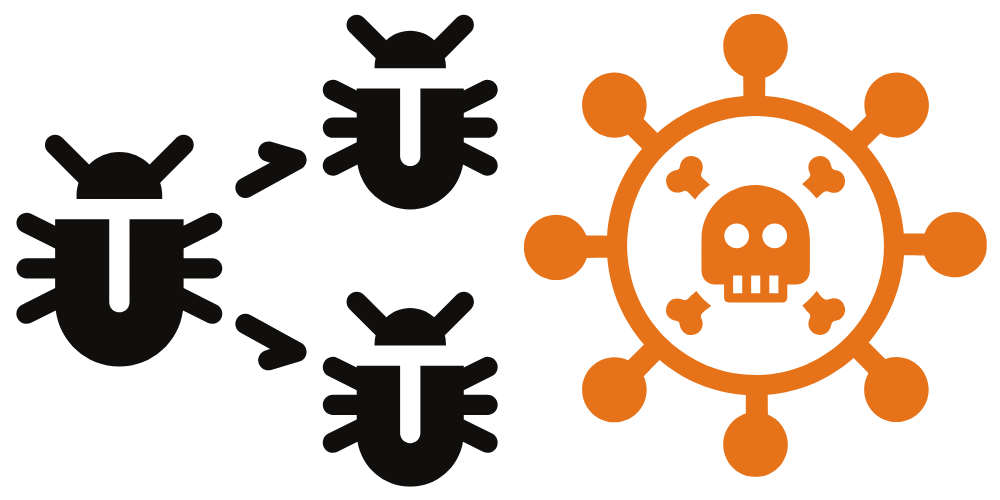
Polymorphic and Metamorphic Malware: Shapeshifting Threats in the Digital World
Polymorphic and metamorphic malware represent advanced and elusive categories of malicious software that cybercriminals use to bypass traditional security measures. These malware variants are designed to constantly change their code, making detection and analysis challenging for even the most sophisticated cybersecurity tools. Understanding what polymorphic and metamorphic malware are, how they differ, and the implications for cybersecurity is crucial for staying ahead in the ongoing battle against these shapeshifting threats.
Polymorphic Malware: The Chameleons of Malware World
Polymorphic malware is a category of malicious software that continually modifies its code while retaining its original functionality. Each time the malware infects a new target, it generates a new, slightly altered version of itself. These alterations can include changes in file size, variable names, and encryption keys, among other elements. The primary goal of polymorphic malware is to evade signature-based detection mechanisms, where security tools identify threats based on known patterns or signatures.
Key Characteristics of Polymorphic Malware:
- Code Transformation: Polymorphic malware uses encryption and obfuscation techniques to change its code, making it difficult to recognize by traditional signature-based antivirus programs.
- Reinfection: Each instance of polymorphic malware generates a unique version of itself, which can infect other systems or files, further complicating detection.
- Complex Algorithms: Polymorphic malware employs complex algorithms to generate new variants, ensuring that each infected system receives a slightly different version.
- Dynamic Decryption: These malware variants often include a decryption routine that dynamically decrypts and executes the malicious code at runtime.
Metamorphic Malware: The Shape-Shifting Masters
Metamorphic malware represents an even more sophisticated class of malicious software. Unlike polymorphic malware, which maintains its original functionality, metamorphic malware completely transforms its code with each infection, making it a true shape-shifter. The primary aim of metamorphic malware is to create new, functionally equivalent versions of itself, which are structurally distinct from their predecessors.
Key Characteristics of Metamorphic Malware:
- Complete Code Transformation: Metamorphic malware undergoes total code transformation, rewriting its entire structure with every iteration to create entirely unique instances.
- Self-Modifying Code: Metamorphic malware includes self-modifying code routines that constantly alter the program's logic and appearance.
- Anti-Analysis Techniques: These malware variants employ anti-analysis techniques, such as code obfuscation, to deter reverse engineering and thwart security researchers.
- Functional Equivalence: Despite their structural variations, metamorphic malware instances maintain identical functionality, ensuring their malicious objectives are consistently met.
Implications for Cybersecurity:
The presence of polymorphic and metamorphic malware presents significant challenges for cybersecurity professionals:
- Detection Complexity: Traditional signature-based detection methods struggle to identify these shapeshifting malware variants, requiring the use of advanced heuristic and behavioral analysis techniques.
- Increased Attack Surface: Polymorphic and metamorphic malware can mutate rapidly, increasing the potential attack surface as they evade detection for longer periods.
- Resource Intensiveness: Analyzing and countering these threats requires significant computational resources and expertise, making them accessible primarily to well-funded threat actors.
- Real-Time Threats: The ability of these malware types to morph in real-time means that even well-protected systems can be compromised before security tools can adapt.
Mitigation Strategies:
To combat polymorphic and metamorphic malware effectively, organizations should adopt a multi-faceted approach:
- Behavioral Analysis: Rely on behavioral analysis to detect malware based on its actions rather than static signatures.
- Sandboxing: Employ sandboxes to isolate and analyze suspicious files and code in controlled environments.
- Threat Intelligence: Stay informed about emerging threats and vulnerabilities through threat intelligence sources.
- Regular Updates: Keep all software and security tools up-to-date to patch vulnerabilities.
- User Education: Train users to recognize phishing attempts and exercise caution when downloading files or clicking on links.
Conclusion
In conclusion, polymorphic and metamorphic malware represent the next level in the cat-and-mouse game of cybersecurity. Cybercriminals are continually evolving their tactics, and staying ahead of these shapeshifting threats requires a proactive and adaptive security strategy that combines advanced detection techniques, user education, and a commitment to ongoing vigilance.